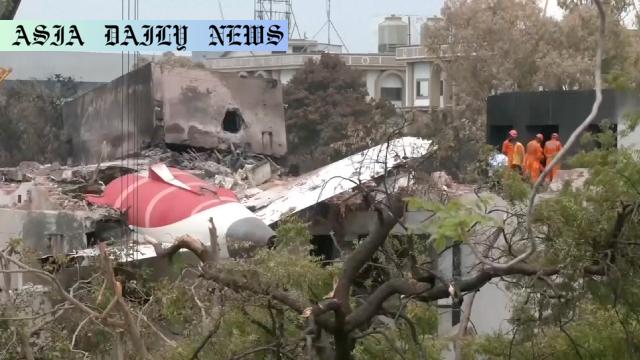Air India crash. Indian authorities release preliminary report on Ahmedabad crash; ongoing investigation announced.
Indian authorities released a new preliminary report on the Air India crash in Ahmedabad.
The crash, involving a Boeing 787, claimed 260 lives with only one survivor.
Fuel control switches unexpectedly transitioned to cutoff, possibly causing engine failure.
Investigations are ongoing without conclusive findings yet.
Expert opinions suggest inspections and corrective measures as needed.

The Air India Crash: A Devastating Tragedy
The Air India Boeing 787 crash in Ahmedabad on June 12 remains a heart-wrenching tragedy, claiming the lives of at least 260 individuals while sparing only one survivor. This catastrophic event not only affected the passengers but also devastated a medical college dormitory that the aircraft struck. The preliminary report from Indian authorities, released by the Ministry of Civil Aviation, sheds light on the sequence of events, although the official cause of the crash remains undetermined.
Preliminary Findings: A Focus on Engine Fuel Cutoff
According to the preliminary findings, the tragedy might link to the unexpected transition of the fuel control switches to the cutoff position. This transition caused a reduction in the engine power shortly after takeoff. Disturbingly, cockpit recordings captured one pilot questioning the other about why the switches were altered, to which the other pilot denied making the adjustment. These findings have intensified the focus on both mechanical and human factors as potential causes. Currently, no actions have been recommended for Boeing, engine manufacturers, or operators, as investigators continue to examine every possible angle.
The Call for Inspections and Corrective Actions
Former air accident investigator Kishore Chinta has emphasized the necessity of proactive measures, including thorough inspections of similar aircraft and engines. Should the ongoing investigation reveal faults in mechanical systems or human operations, swift corrective action will be paramount to ensuring passenger safety worldwide. This call to action reminds us of the vulnerabilities inherent in modern aviation and the need for continuous oversight. The aviation industry awaits deeper clarity on whether the fault lies with the Boeing 787’s design, an operational issue, or an unforeseen technical glitch that needs rectification.
Impact on Global Aviation
This incident highlights the potential hazards of complex aviation systems, emphasizing the collaborative responsibility of manufacturers, regulatory bodies, and operators in maintaining safety. The Boeing 787, utilized internationally, has been a cornerstone of many airline fleets. Thus, any conclusive findings from this investigation could have widespread implications for global aviation. Passenger trust and confidence in the industry hinge on the transparency and thoroughness of the responses given by investigative authorities and manufacturers alike.
Outlook: Moving Forward Safely
As the investigation unfolds, families and loved ones of those lost in the crash await closure. The lessons learned from this tragedy must propel the aviation industry toward improved safety protocols and heightened vigilance. Whether the root cause is identified as human error, mechanical malfunction, or a combination of factors, collaborative and swift action will be essential to prevent future tragedies. The Air India crash serves as a somber reminder of the high stakes of air travel, urging every stakeholder to prioritize safety above all.
Commentary
A Deep Reflection on the Air India Crash
The Air India crash in Ahmedabad is one of the most devastating aviation tragedies in recent years. With over 260 lives lost and only one survivor, the incident has left an indelible mark on the families of the victims and the global aviation community. As more details emerge in the preliminary report, it forces all stakeholders to confront the potential vulnerabilities in the intricate web of air travel.
The Role of Investigations in Preventing Future Tragedies
Accidents of this magnitude demand more than just investigations; they require a commitment to transparency and a proactive approach toward risk mitigation. The preliminary findings regarding the sudden fuel cutoff on the aircraft’s engines expose how even minor lapses or unforeseen technical events can have catastrophic repercussions. The cockpit voice recording adds another layer of complexity, hinting at either miscommunication or potential mechanical failure. No matter the cause, it is imperative that authorities, manufacturers, and operators take decisive actions to analyze and rectify all potential contributing factors.
Building Confidence Through Action
While the report concludes with no immediate recommendations for Boeing or other stakeholders, this incident underscores the necessity of maintaining vigilance in aviation safety protocols. Furthermore, the call for inspections of relevant aircraft models by experts like Kishore Chinta highlights the aviation industry’s shared responsibility in preventing such tragedies. Passenger confidence must remain a priority, and all parties involved must recognize the importance of accountability and resolution. Missteps in addressing problems early could risk jeopardizing public trust in air travel safety standards.
Learning From Tragedy to Forge a Safer Future
As the investigation progresses, we must honor the memory of those who lost their lives by ensuring that lessons from this tragedy are actively applied across the aviation sector. By doing so, tragedies like the Air India crash will not only lead to deeper awareness but also foster crucial advancements in aviation safety—offering solace in the promise of a safer future for everyone who steps aboard an aircraft.


